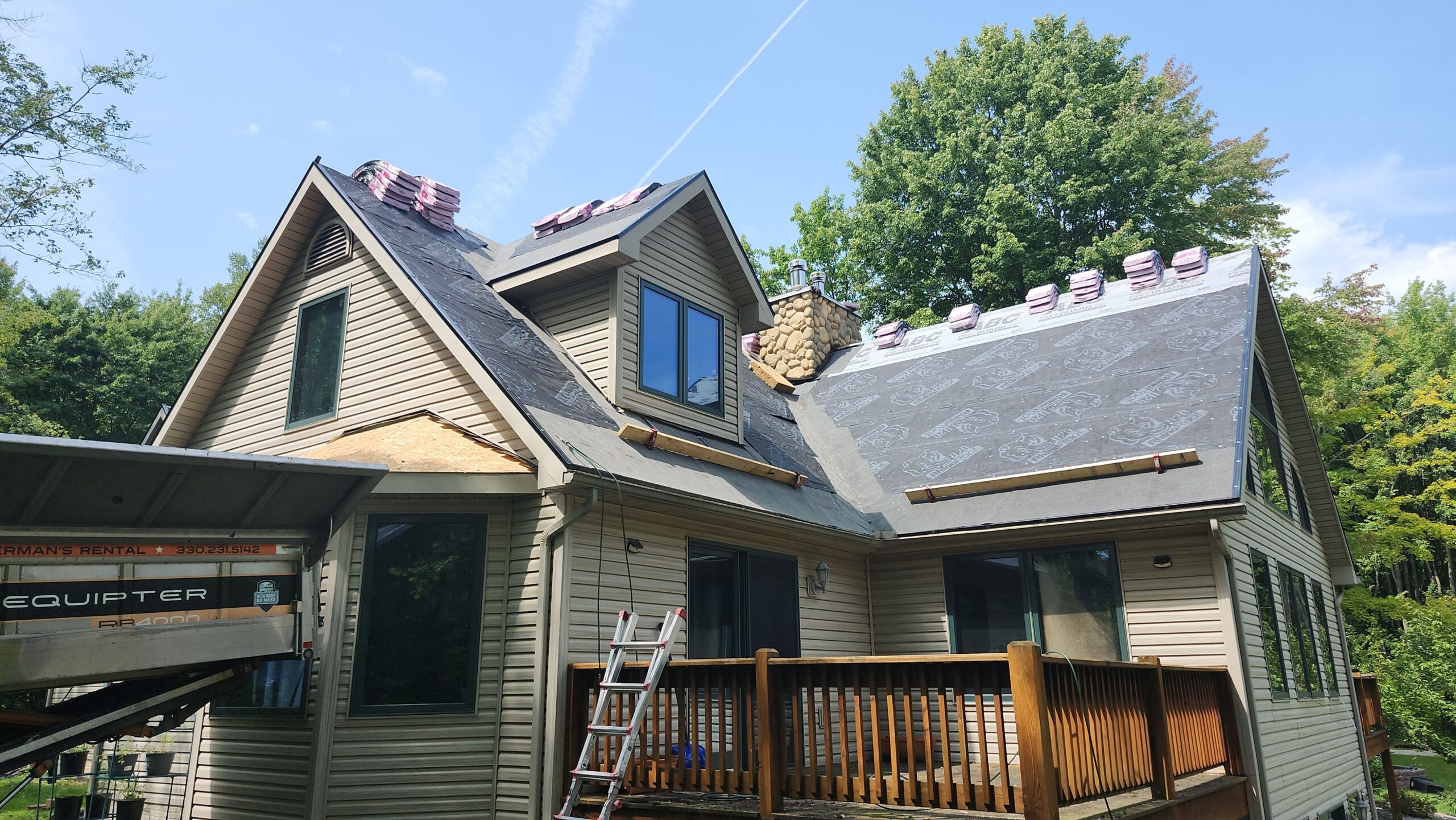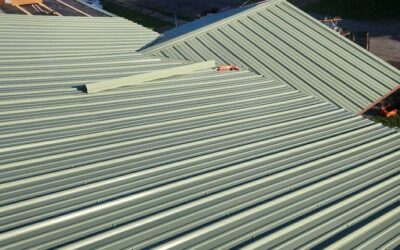Can You Live in Your Home While Redoing Your Roof? A Comprehensive Guide
Undertaking a roof replacement is a major project for homeowners, one that involves both time and money. Whether your current roof has experienced wear and tear, damage, or simply reached the end of its lifespan, replacing your roof is crucial for maintaining the integrity of your home. But while a new roof is essential for protecting your home, it does come with some disruptions. One of the most common questions homeowners ask is, Can you live in your home while redoing your roof?
At S&K Construction and Remodeling LLC, we understand that a roof replacement is not just a home improvement project – it’s a significant event that impacts your daily life. As roofing professionals serving the Northeast Ohio area, we’ve worked with countless homeowners, helping them navigate the process of roof replacement. In this blog, we’ll break down everything you need to know about living in your home while redoing your roof, including the potential challenges, safety considerations, and ways to make the process more manageable.
Why Would You Need a Roof Replacement?
Before addressing whether it’s possible to stay in your home during a roof replacement, let’s take a look at why you may need to replace your roof in the first place. There are many reasons why a roof replacement is necessary:
- Roof Damage: From severe storms to falling debris, roof damage can occur for a number of reasons. If your roof has sustained significant damage, it might be beyond repair and require replacement.
- Old Roof: Most roofing materials have a lifespan, typically ranging from 20 to 50 years. As your roof ages, it becomes less effective at protecting your home, and replacing it can help you avoid costly repairs down the road.
- Energy Efficiency Concerns: Over time, roofs can become less energy-efficient. A roof replacement can improve insulation, reduce energy bills, and keep your home more comfortable year-round.
- Aesthetic Appeal: In some cases, homeowners choose to replace their roof for cosmetic reasons. A new roof can significantly enhance the curb appeal of your home.
When it’s time for a roof replacement, it’s essential to act quickly. However, many homeowners worry about the disruption that comes with such a large project. So, let’s explore the factors that will help you decide if you can live in your home while your roof is being redone.
Can You Stay in Your Home During a Roof Replacement?
The short answer is yes, you can generally live in your home while redoing your roof. However, this doesn’t mean that the process will be entirely hassle-free. Whether you decide to stay or temporarily relocate during the project depends on several factors, including the type of roof, the extent of the replacement, and your personal preferences.
Factors to Consider When Deciding Whether to Stay
1. Duration of the Project:
The length of time required for a roof replacement can vary based on the size and complexity of your roof. Most roof replacements take anywhere from one to three days, with the following factors influencing the timeline:
- Size of the Roof: Larger homes with more square footage may require more time to complete the replacement.
- Weather Conditions: Rain, snow, or extreme temperatures can delay the roofing project.
- Roof Design: Roofs with complicated designs or multiple layers may take longer to replace.
- Material Type: Certain materials, such as slate or tile, may take longer to install than more straightforward options like asphalt shingles.
While you may not have to leave your home entirely, the project’s length can influence how disruptive it is. If you’re sensitive to noise or have young children, staying in your home may be challenging during the process.
2. Noise and Disruption:
One of the most significant factors to consider when deciding whether to stay in your home is the noise. Roof replacement is a noisy process, and the constant sound of hammers, nail guns, and other equipment can be jarring. Depending on your sensitivity to noise and your daily routine, this could become a major inconvenience.
Here are some of the most common noise sources during a roof replacement:
- Removing Old Roofing Materials: Stripping the old shingles or tiles can be loud, as workers use hammers and power tools to remove the materials.
- Nailing Down New Roofing Materials: When the new roof is installed, there will be constant hammering and nail gun sounds as the new shingles or tiles are secured.
If you work from home or have young children who nap during the day, the noise could be particularly disruptive. Some homeowners choose to leave their homes temporarily to avoid the noise and stress of the project.
3. Safety Concerns:
Roofing is inherently dangerous work, and safety is always a priority. The presence of workers on scaffolding, the use of power tools, and the movement of heavy materials can create hazards. If you have children, pets, or elderly individuals living in your home, it’s essential to minimize their exposure to the work area to reduce the risk of accidents.
4. Exposure to the Elements:
While your roof is being replaced, parts of your home may be exposed to the elements. When the old roof is removed, your home may be temporarily vulnerable to rain, wind, or snow. This is particularly important to consider if the weather forecast calls for storms or heavy rain during the roof replacement process. A professional roofing contractor will take steps to protect your home by covering the exposed areas with tarps, but it’s still a good idea to plan for the possibility of water exposure.
5. Limited Access to Certain Areas of the Home:
During the roof replacement, workers may need to access your attic or other upper levels of your home, especially if the roof is being completely replaced. This could limit access to certain rooms or areas of your house. If you or your family members need to access these areas during the project, you’ll need to plan accordingly.
What to Expect When Living in Your Home During a Roof Replacement
If you decide to stay in your home during the roof replacement process, it’s important to know what to expect. Here’s a breakdown of the common experiences and disruptions that you might encounter:
1. Noise Levels:
As mentioned earlier, the noise from a roof replacement can be loud. If you plan to stay at home during the project, it’s a good idea to prepare yourself and your family for the constant sounds of work. Here are some tips for coping with the noise:
- Use earplugs or noise-canceling headphones to block out the sound.
- Move to the far side of the house, away from the work area, to minimize the noise.
- If possible, arrange for activities outside the home, such as going to a park or visiting friends or family, to provide a break from the noise.
2. Dust and Debris:
A roof replacement can be a messy job. As old shingles are removed, dust and debris can fall into your yard or driveway. While roofing contractors will typically use tarps or coverings to catch falling debris, some dust may make its way into your home. To minimize dust inside, consider sealing off rooms closest to the work area or using plastic sheeting to block off doors.
3. Limited Access to Certain Rooms:
During the project, workers may need to access areas of your home, such as the attic, to ensure the proper installation of the new roof. If you have a busy household, you may need to limit access to certain parts of your home to keep things organized and safe. Keep personal items secure and make sure children and pets are kept away from the work zone.
4. Temporary Exposure to the Elements:
If the weather takes a turn while your roof is being replaced, there’s a chance that parts of your home may be exposed to rain or other weather conditions. A professional contractor will cover exposed areas with tarps to prevent leaks, but it’s important to remain vigilant about weather patterns. Ensure you have a contingency plan if the weather looks unfavorable.
5. Disruptions to Your Daily Routine:
Living in your home while your roof is being replaced may disrupt your normal routine. You may need to adjust your schedule to accommodate the workers’ hours, or you may want to rearrange activities to avoid areas affected by construction. If you work from home, consider relocating to a quieter room or scheduling meetings outside the home to reduce interruptions.
Tips for Staying Comfortable While Living in Your Home During a Roof Replacement
If you choose to stay in your home during the roof replacement, here are some tips to help make the experience more comfortable:
- Prepare for the Noise: While it’s impossible to completely eliminate the noise, you can minimize its impact by wearing earplugs or noise-canceling headphones. Moving to a different part of the house or even spending time outside during work hours can help reduce your exposure to the noise.
- Seal Off Rooms: To keep dust and debris from entering your living space, use plastic sheeting or tarps to seal off rooms that are closest to the work area. This will help protect your furniture and belongings from dust.
- Plan for Exposed Areas: As the roof is being replaced, parts of your home may be exposed to rain, wind, or extreme temperatures. If the weather forecast predicts poor conditions, make sure your contractor has proper covering in place, and be ready to take precautions to protect your home.
- Keep Children and Pets Safe: Ensure that children and pets stay away from the work area. You may want to create a designated safe space in your home where they can spend time away from the noise and dust.
- Prepare for Limited Access: If workers need access to your attic or other upper floors of your home, plan accordingly. Keep the areas clear of obstacles and be mindful that workers may need to move around inside your home.
Alternatives: When to Consider Staying Elsewhere
In some cases, it may be more convenient or safer to temporarily leave your home during the roof replacement. Here are some situations where you might want to consider relocating during the project:
- Severe Weather: If the weather forecast predicts storms or heavy rain during the project, staying elsewhere might be a good idea to avoid potential water damage.
- Health Concerns: If you or anyone in your home has respiratory issues, the dust and debris from the roof replacement could exacerbate these conditions. In such cases, consider staying with family or in a hotel until the project is complete.
- Large or Complex Roof Replacements: If your roof replacement is large or complex, it might take longer than expected. In this case, staying with friends or family for a few days may provide more comfort during the process.
Conclusion: Can You Live in Your Home While Replacing Your Roof?
In most cases, yes, you can live in your home while redoing your roof. However, it’s essential to consider factors such as noise, safety, weather conditions, and disruption to your daily routine. With proper preparation and communication with your contractor, you can make the process more manageable and ensure that the roof replacement goes smoothly.
At S&K Construction and Remodeling LLC, we’re here to help you through every step of your roof replacement project. Whether you decide to stay in your home or temporarily relocate, our team will work with you to ensure the process is as smooth and efficient as possible. If you have questions or want to schedule a roof inspection, don’t hesitate to contact us. Let us help you protect your home with a high-quality roof replacement that meets your needs.
About S&K Construction and Remodeling LLC
S&K Construction and Remodeling LLC is a trusted roofing contractor serving the Northeast Ohio area, including Youngstown and surrounding communities. As an Owens Corning Preferred Contractor, we offer reliable roof replacement, repair, and installation services. Our team is committed to providing the highest quality workmanship and exceptional customer service to every homeowner.
Contact us today
to learn more about our services and to schedule a free consultation!
 (440) 307-2060
(440) 307-2060


